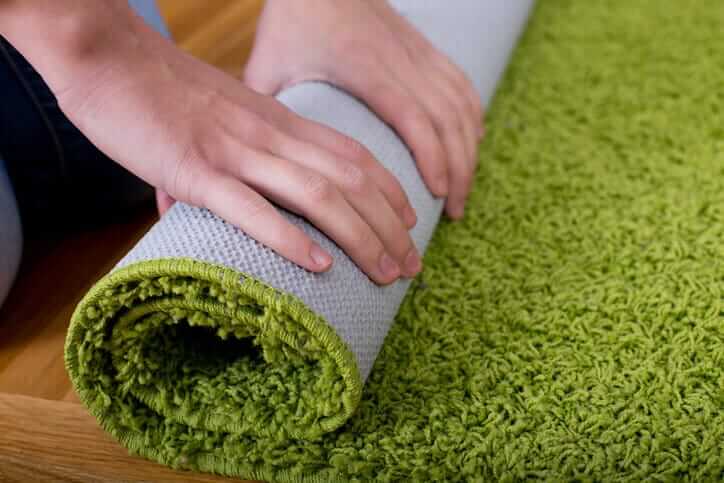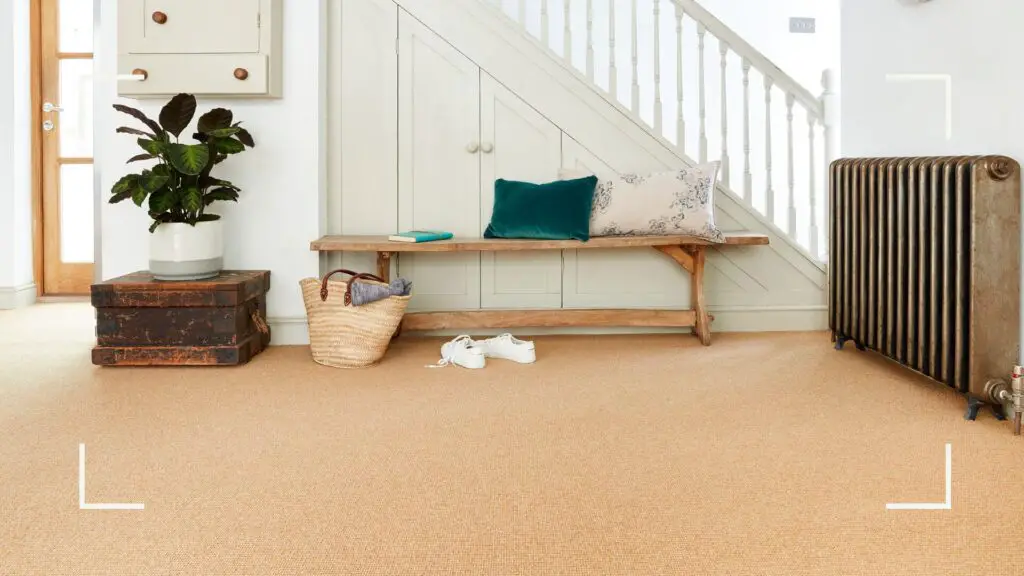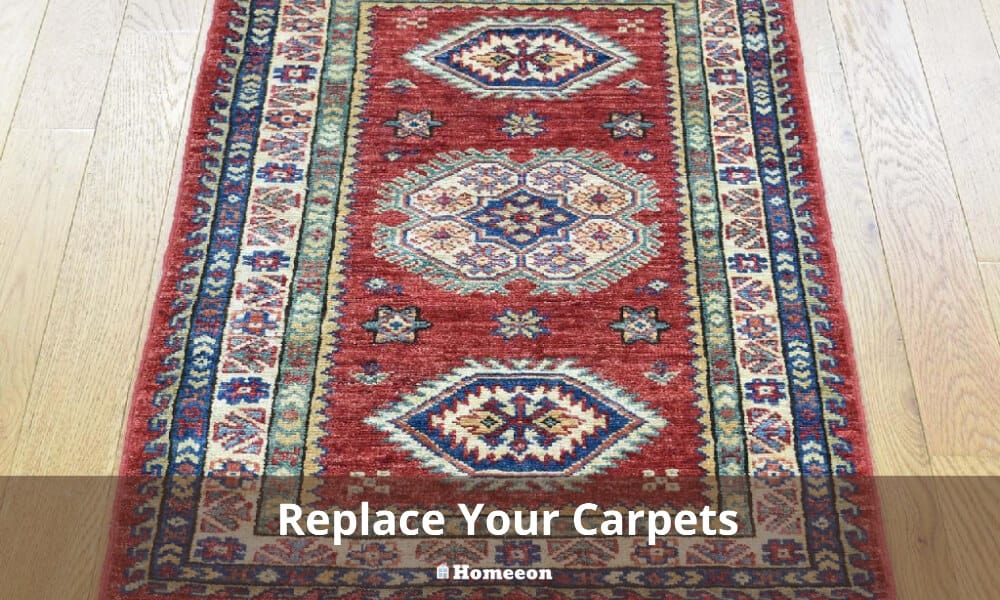Last Updated on August 15, 2023 By Emma W. Thomas
Carpets generally last around 5 to 15 years, depending on factors like material quality, traffic, and maintenance. High-traffic areas might require replacement every 5-7 years, while less-used areas can last up to 15 years. Regular cleaning and care can extend their lifespan.
How Often Should You Replace Your Carpets?
Whether you’ve recently installed new carpets or have had them for a while, one question that might be on your mind is how often you should replace them. While there’s no definitive answer that applies to every situation, several factors can help you determine when it’s time to give your carpets a much-needed update. Let’s dive into the factors that influence carpet lifespan and figure out how often you should replace them.
- Wear and Tear:
- The durability and quality of your carpets play a significant role in how long they last.
- High-quality carpets with proper maintenance can last up to 10-15 years.
- However, lower-quality carpets may need replacement every 5-7 years due to increased wear and tear.
- Foot Traffic:
- The amount of foot traffic your carpets endure affects their lifespan.
- Carpets in high-traffic areas like hallways and living rooms tend to wear out faster than those in less frequently used parts of your home.
- Consider replacing carpets in heavily trafficked areas every 5-7 years, while carpets in low-traffic areas may last up to 10-15 years.
- Stains and Damage:
- Spills, stains, and accidents are bound to happen, especially if you have pets or young children.
- Regular carpet cleaning and spot treatment can extend the life of your carpets.
- However, extensive staining or irreversible damage like burns or tears might necessitate an earlier replacement.
- Allergens and Odors:
- Carpets can trap allergens, dust, and odors over time.
- Regular vacuuming and professional cleaning can help alleviate these issues.
- If despite your efforts, your carpets still emit unpleasant odors or cause allergic reactions, it might be time for a replacement.
- Changes in Interior Design:
- Sometimes you might want to update your home’s interior design or change the color scheme.
- If your carpets no longer match the new aesthetic or clash with the rest of your decor, it’s a good opportunity to replace them.
- Health and Safety Concerns:
- Over time, carpets can accumulate bacteria, mold, and other harmful substances.
- If you or your family members suffer from respiratory issues or allergies, it’s important to consider replacing carpets that could be aggravating these conditions.
- Personal Preference:
- Ultimately, how often you replace your carpets can come down to personal preference.
- If you enjoy the appearance and feel of new carpets, you might choose to replace them more frequently.
Signs Your Carpet Needs Replacing

You may not need to replace your floor covering just because it is old, but a modern carpet has a lifespan of five to fifteen years. The lifespan of your flooring will depend on its construction quality and how much foot traffic it gets exposed to regularly. However, the following signs will need you to change to a new one;
- Blemishes on your carpet
If your carpet has stains or discoloration that fails to go even after cleaning, it may be time for a replacement. Mats come with a stain-resistant finish which may fade over time leaving the carpet unprotected and eventually getting stubborn marks. Replace the covering to give your house the sparkle it deserves.
2. Age
The quality of construction of your carpet, as well as the amount of foot traffic it receives regularly, determines its lifespan. A mat in a spare room will last longer than one in the main hallway even when they are of the same material.
Over time, the padding underneath your carpet will deteriorate making it feel lumpy or uncomfortable which calls for a replacement.
3. Threadbare parts
A carpet with short fibers is designed to last longer but will eventually wear out. You need to replace your flooring if you can see the horizontal strands of the backing material through the top. You cannot remedy the situation by either fluffing or cleaning your carpet.
If you also notice in thinning parts or fraying along the edges of your carpet, don’t hesitate to remove the old one and bring in a new one.
4. Odors
You may realize that your carpet still produces a foul smell even after cleaning. Your floor covering traps dust, debris, dirt, and allergens over time which makes cleaning a problem.
Bad smells build up on your carpet over time which may be a health risk, especially for those with allergies and asthma. Unlike stains, you may not hide odors under your furniture which means replacing it is the best option.
5. Shifting shades
If your carpet begins to fade in some areas or it changes the hue than when you bought it, it means the fiber has faded and it is time to get a new one. Exposing your mat to air, sunlight, and cleaning agents may change the color of the dye on some fibers of your carpet.
Fading alone may not warrant changing your floor cover if it is still in good condition. You will, however, have to buy a new one if its color is uneven or you notice other issues.
6. Contorted carpets or flattened fibers
If the fiber of your carpet that once stood tall looks matted and flat now in some parts, it may mean the rug is past its prime. Olefin and polyester fibers are prone to matting, especially in areas with a lot of foot traffic.
If your carpet does not fluff back even after cleaning and combing, then it’s high time you consider replacing it. If your carpet is stretched beyond its initial shape, creating warps, tripping points, and ripples all over your room, then it is time to swap with a new one.
What you should replace your carpet with
You can replace your old carpet by installing hardwood flooring, but the process is more involving. Hardwood is a quality product, but you may have to pay more for the installation.
What to know before replacing carpets with hardwood flooring
Hardwood flooring adds value and style to your home and also makes it easy to maintain. The floor cover is also durable and sustainable, but there are some factors to consider before installing which include;
1. Effects of moisture levels on hardwood flooring
Moisture is an essential factor to think of, especially in areas with high humidity or heavy rainfall. Exposing your hardwood floor to high levels of dampness can void the manufacturer’s warranty or damage it.
2. Choosing materials
Before choosing materials for your flooring installation, it is critical to discuss with an expert. It will be best for you to start with moisture testing to ensure the floor cover functions and looks best to protect your investment.
Calcium chloride testing is a simple procedure to identify the moisture that a concrete slab gives off. It is necessary to cover the ground underneath with a plastic sheet to prevent the humidity from the ground from reaching your floor.
3. Installation costs
Installing hardwood flooring is a worthy investment, but you should not pay more than necessary. You can research on the pricing of materials per square foot from multiple retailers or online. It is, however, prudent to investigate the holistic cost of the project and budget for the same.
4. The installation process of hardwood flooring
After finalizing your project including testing for moisture, the installation process should proceed as follows;
- Delivery of materials at the site at least one or two days before the procedure for acclimatization
- Moving small and delicate items such as collectibles and electronics and removing the existing flooring. Examination of the surface area for imperfections and addressing any issues. Remove trim and baseboards if necessary
- Installing new floor cover material including transitions and any trim or baseboard
- Cleaning the place and putting back furniture
The average life of a carpet

Your carpet’s lifespan is determined by its quality as well as exposure to wear and tear, but on average it lasts between 3-5 years. Within this period, most carpet fibers become frayed and old, and stains will have appeared.
Your once pure, white carpet starts turning grey and dull from three years and above and may need replacing.
Final Word
A carpet adds elegance to your home, especially when in good condition. You need to change the flooring when it fades or when you feel that it has served you long enough. Replacing your carpet with hardwood is ideal as it is more durable and easy to maintain.
References:
https://www.homesandgardens.com/interior-design/how-often-should-you-replace-your-carpet
https://www.carpetone.com/flooring-guide/product-carpet/carpet-replacement
Emma is a graduate of Domestic Science or Family and Consumer Sciences (Home Economics) from the University of Wisconsin. She has 7 years of experience Working with the strategic section of BestBuy and now writing full-time for Homeeon.
From Managing the Home, Interiors, Cleaning, and Exteriors to Gardening and everything about Making A Home Liveable – is her passion and this Homeeon is the result of this.
Emma loves decorating her home with the best stuff found online. She cares about quality over anything and writes reviews about them here in Homeeon. Get in touch with her over Pinterest.
Keep reading her blogs.

